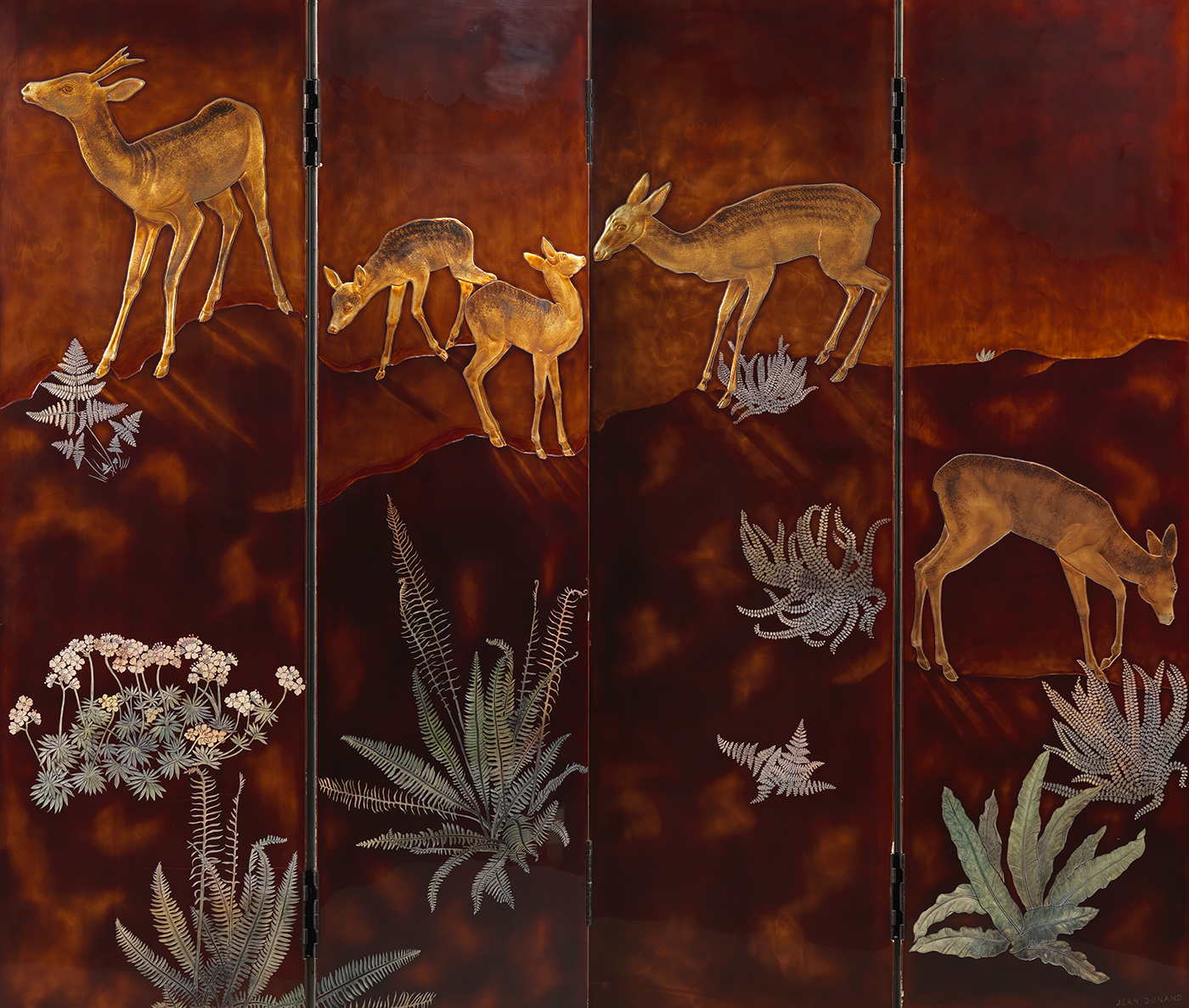
Ornament and decoration: 1920s France and 19th-century Iran
In working on this show I think I have come to a closer understanding of the nature of Calouste Gulbenkian’s taste, and I see it as fundamentally decorative, and in this way, as fundamentally achronological. If our exhibition is seen by some as strangely eclectic, I feel that this in fact mirrors the way in which Gulbenkian worked. His readiness to buy works from across many periods is mirrored by his readiness to buy works from quite different places. Despite the exhibition’s modern design, I am tempted to wonder whether it does not better reflect the nature of Gulbenkian’s own collection than the Museum itself. In his house things were very mixed up. It is only in the Museum that departments were created, segregating objects by geographical origin and period.
The combination of the Iranian painted doors and the lacquer screen by Jean Dunand are a case in point. Though they come from very different times and places, one was bought by Gulbenkian in 1925, and the other made at the same time. Dunand’s screen is not usually on show in the Museum because it is not part of the museum collection as such. But we have used this exhibition as a chance to bring out quite a number of the objects from Gulbenkian’s house, objects which were in fact much more modern, and which reflected the very best and most fashionable taste of the times. Dunand was at the height of his career at this point. At the same time, Gulbenkian was buying historic pieces like the doors, and both surfaces delight the eye in terms of their mastery of decorative composition across a large area, whether by means of minute repetition, or by larger motifs as with Dunand. Both however show very similar subjects: the wild animal, and especially the deer, in a wooded setting. The way in which a pattern can command a surface is obviously a cause for delight in the collector’s eye, and is manifest throughout the show.
Penelope Curtis, curator
Quando Calouste Gulbenkian deixou o grande apartamento de Quai d’Orsay e passou a ocupar a mansão da Avenue d’Iéna era sua intenção transformar os seus espaços, adequando-os a uma nova vivência, tanto da sua família como da sua coleção. No que respeita à segunda, a ordem encontrada para os objetos poderá parecer sem critério, mas isso explica-se através das próprias palavras de Gulbenkian, tantas vezes repetidas: «sou muito eclético… não sou um colecionador de épocas ou de séries». Ora a organização da coleção na casa que escolheu para a acolher parece privilegiar sentidos que contrariam o «arrumo» do Museu, esses sim tradicionalmente preocupados com uma organização geográfica, temporal, serial, tipológica… Para isso terá também contribuído o apoio do arquiteto Emmanuel Pontremoli e do decorador Adrien Karbowsky, que ajudaram a dar forma ao pensamento de Gulbenkian e ao seu gosto pelo decorativo. Na exposição Linhas do Tempo, esse gosto assoma no diálogo que a natureza ornamental dos objetos propicia. Veja-se o biombo e os batentes de porta, habitualmente em reserva, que parecem não ter lugar na lógica expositiva do Museu. Une-os a técnica da laca, de tradição milenar, que encontra no período Déco, um revivalismo feliz, atualizando a sua expressão decorativa, como no exemplo do biombo de Dunand, que utiliza animais e plantas de grande realismo e qualidade formal. Nesse mesmo período, Gulbenkian está atento a objetos provenientes de longitudes distantes, como o Irão, adquirindo os batentes de porta presentes na exposição. A riqueza decorativa de matriz naturalista e a mestria da sua execução são valores que justificam plenamente as opções de Gulbenkian, para quem a arte da laca exercia tanto fascínio, independentemente da época ou do centro de produção em que foram executados.
João Carvalho Dias, curador